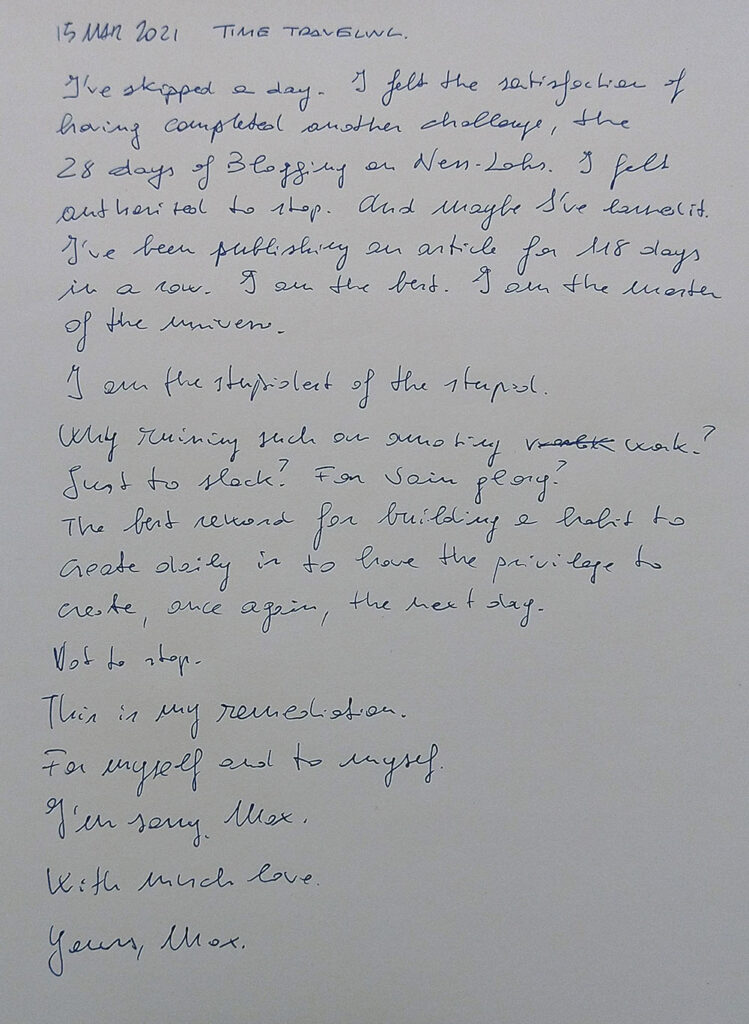
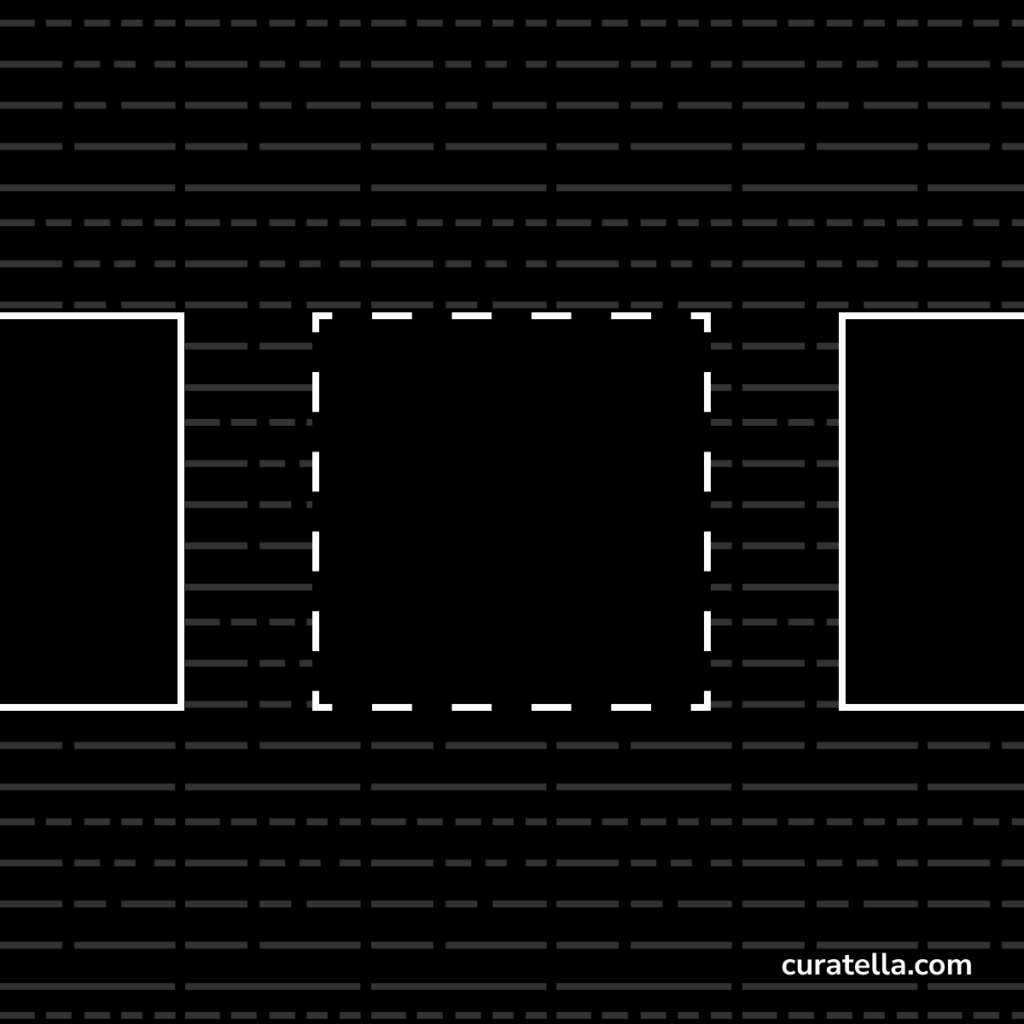
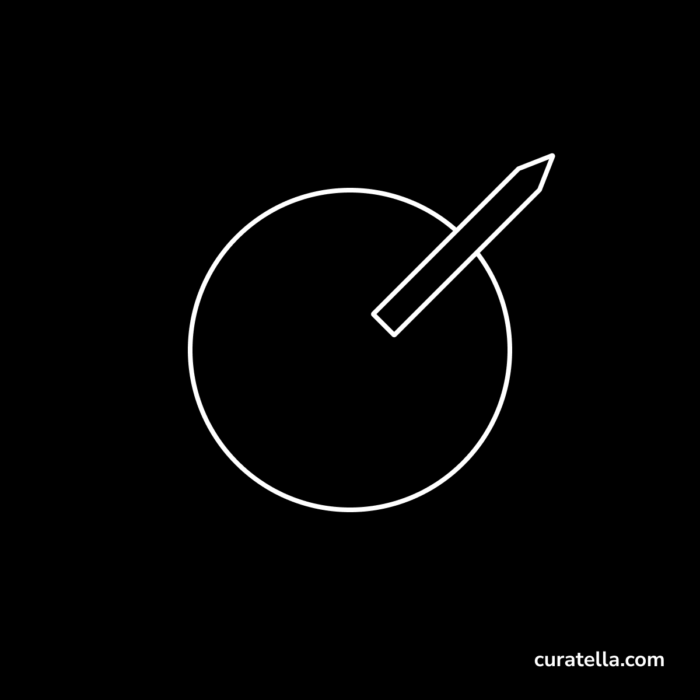
What was the most critical event determining my 117 daily articles written and published in a row?
Starting.
I faced any possible struggle, pain, boredom, unsatisfaction, and uncertainty while trying to find the will and the time to write for almost four months, every single day. I stretched my creativity to the limits. I had to overcome the fear of failure, looking stupid, saying something wrong, being inadequate, uncomfortable, or not up to the standard—every day for 17 weeks. No exceptions, no day skipped, no holidays, no pauses.
That was nothing compared to the single most important action I could do precisely on the 15th of November 2020.
Starting.
We are living in our self-built creative cages.
And this is how you self-sabotage. This is how you have prevented yourself from the joy of experimenting and exploring the infinite meanders of creativity.
Writing is not my job. I am not a professional writer. I am not “published”. I am not selling my writings. But if only I could make you feel the joy and the satisfaction of letting words flowing out of my fingers and getting shared, now, right here, with you. It’s the most beautiful sensation in the world.
Do you want to create?
Enjoy the story told by my friend, David Orban, about how I’ve shared my enthusiasm in starting with one of his group, Emil.

There is a strong parallel between the characteristics and the influences of physical places on our lives and what worlds of information living in immaterial digital existences are having on them.
Living in Information by Jorge Arango is about designing digital places: information spaces where we act, move, search and request to satisfy our needs in similar and sometimes more complex and powerful ways than the physical ones.
As designers of interactions, learning, services, products, we need to be constantly aware of the importance of the architecture of a space and its characteristics to create meaningful experiences for the people living in it.
Jorge Arango, Information Architect, Strategic Designer, writes about the factors involved in designing digital places in this well-structured and flowing text, which should be a reference point for any modern designer.
The neat organization in chapters provides a systematic structure to sustain a holistic and multi-perspective view of information environments, their influence on humans, and the fundamental properties to consider when designing them.
A logical sequence of concepts, treated in a fluid and convincing style, tells a story where the two distant actors converge into a unifying theory: the physical and the digital space. The concepts: Environments, Context, Incentives, Engagement, Technology, Architecture, Structure, Systems, Sustainability to conclude with Gardening.
A systemic and systematic view of digital design empowers a multi-angle and structured vision of designing Information Environments.
The narration unfolds to focus on the critical question of this book: “How can we design these information environments, so they serve our social needs in the long term?”
Each chapter contributes to stimulating an answer. Chapter 6, in particular, gives a strong point about it:” Architecture: We can intentionally design our environments to better serve our needs. Architecture is the design discipline that is focused on structuring our physical environments, and information architecture is the design discipline that does the same for information environments.”
I particularly appreciate the expanded and expanding view of Arango when he extends the scope to systems, systems of systems, and ecosystems, increasing the conceptual power and the strength of the framework as he does in Chapter 8. Systems: “Environments are not just structural constructs; many other systems must work in concert to make it possible for them to serve our needs. Architects must consider how these systems work together. “
This takes the discussion beyond the border of the single, closed, independent scope of the artifact, the product, or the service, extending the consideration to a Systems View which entails a long sequence of dynamics and phenomena as well explained in the various Systems Thinking schools: systems change, often unpredictably, usually cannot be controlled and need ongoing stewardship as well described in Chapter 10, Gardening.
I loved “Living In Information” because it helped me have a more comprehensive, broader, and more encompassing view on design, design thinking, information architecture, systems design, systems thinking, sustainability development, usability, human-centered design, strategic design.
“Living in Information” is a precious book to be lovingly kept on any designer’s bookshelf.

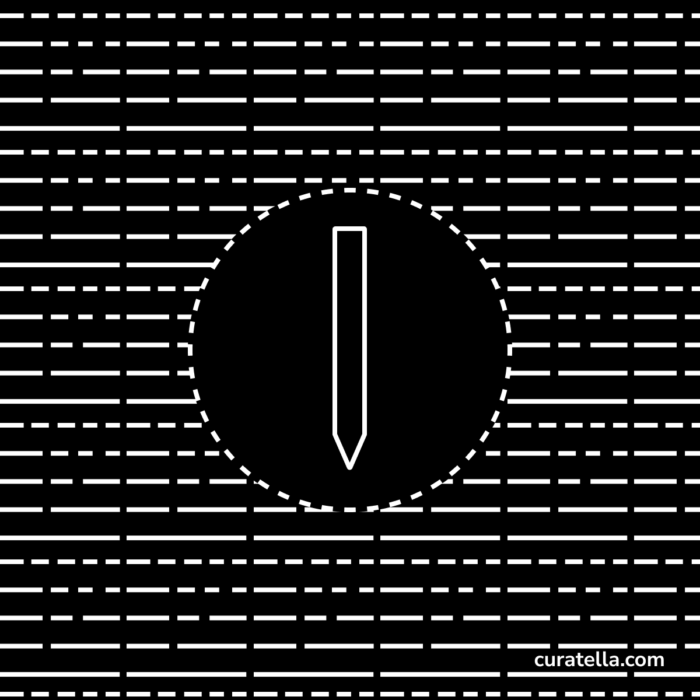
After writing in my private journal for one year and half a million words created, I took the challenge of posting an article per day for 30 days. I’ve never stopped since then, passing first for 100 daily articles published in a row and, with this one, reaching my 115th short essay.
Thanks to my fellow Brain Trusters friends’ help, I have committed myself to create a learning challenge where I share my lessons learned with a group of participants.
The first cohort will be alpha testers helping me with a draft outline to refine it and fine-tuning it.
My experience taught me that, as a participant, you have to put some money at stake, even a small quantity because it helps you stay motivated and work consistently. So even if at a heavily discounted price, there will be a subscription fee.
I will work on refining the outline and the collaboration environments this weekend with the hope of launching the alpha version privately to a restricted group of selected people. I have about 10 participants so far to be confirmed.
Would you like to participate?
Contact me to get more info.
Thanks.
(I’ve received precious help in writing this article from Narayan Kamath, Antonella Pastore and Elizabeth Michael)


You need to be more possibilistic. I know you have experience. You’re an expert in your field. Yes, you’ve been working on all kinds of projects: big and small, narrow and wide, complex and simple. I understand when you say you have an intuition and you can quickly find potential solutions and good roads to take. But when you stay on the surface of things you are not evolving as a professional. You might move to a more strategic role or even management but when you stop doing fieldwork you are missing a lot of opportunities.
Technology becomes more and more complicated and complex. Although design principles and sound mental models are the best equipment for a professional, in any field, detaching yourself from daily practice is risky. You become slow with tools because they change rapidly so you risk spending more time learning new tools from scratch rather than producing value. You weaken your capability to combine simple parts into complex ones to face complexity with complexity. When you don’t dedicate hard, intense, and deep work to a project you stop getting insights, refining your skills, and taking the chance to move your discipline further.
I am not saying you should go back to the front line to build the bricks, one by one, to raise a wall. But a good part of your working time should be involved in getting your hands dirty.
It’s the best way to constantly learn, refine your expertise, getting a chance to share your knowledge with others, putting your creative skills to hard work. And this keeps you alive, up-to-date and, maybe, you could even have the satisfaction and the fun of having accomplished something difficult and beautiful.
Get out of the office, put down your phone and see if you can do some practical work in your field, you’ll have immense benefits.
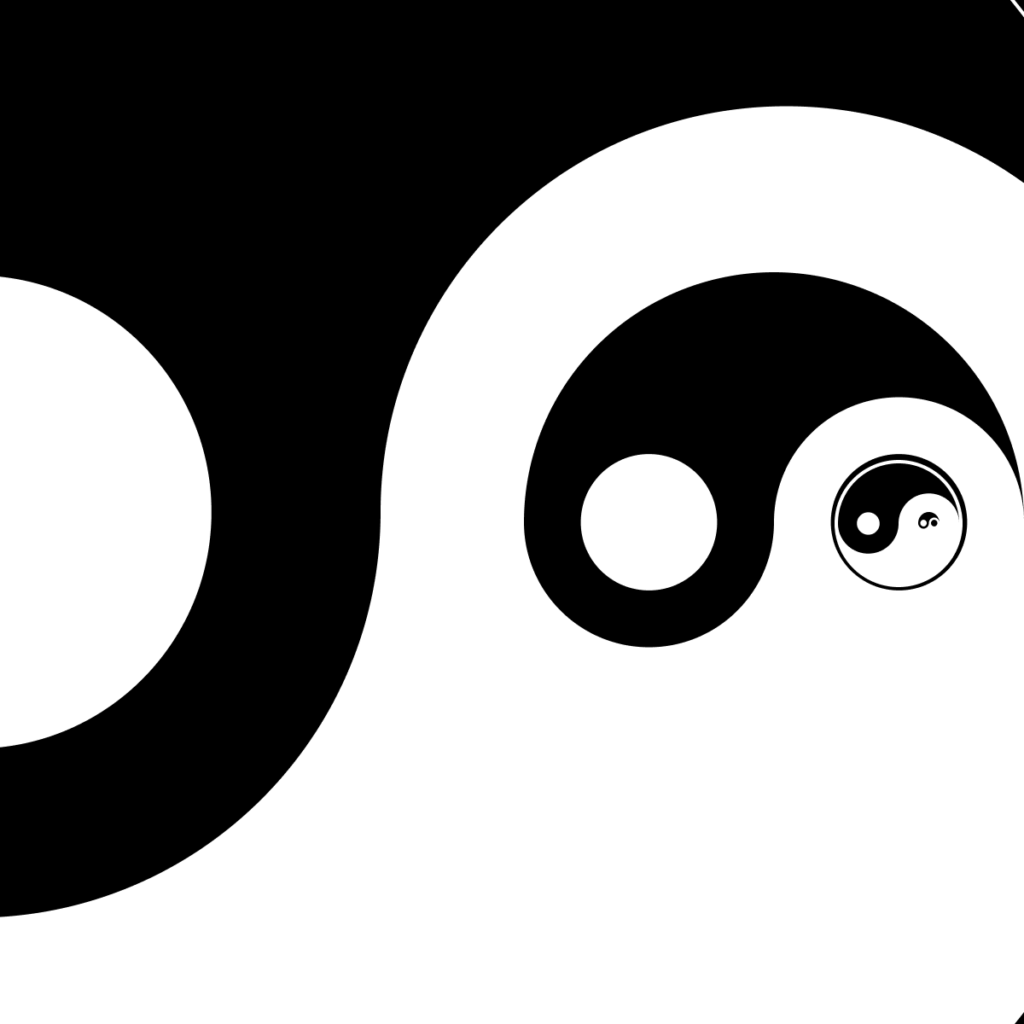
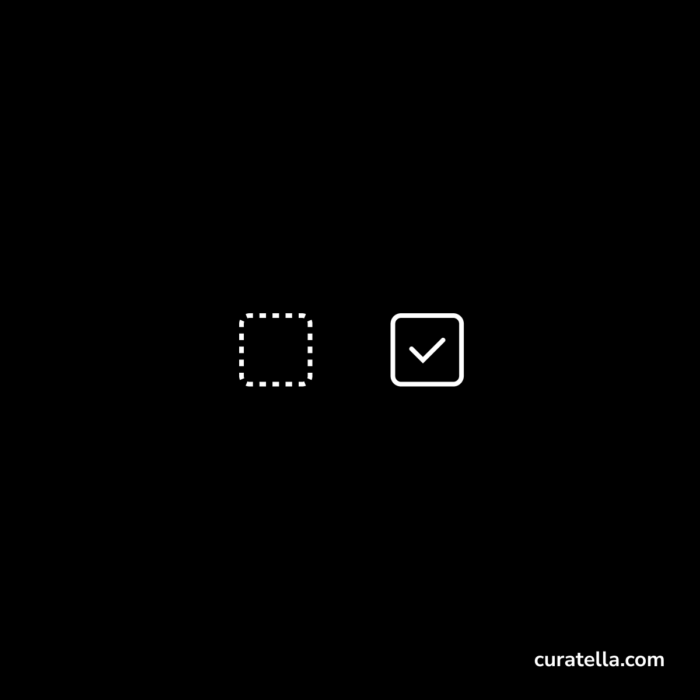
Asking questions is an essential tool to learn about the world. Not all questions are created equal. When you want to assess a specific situation without the details quickly, you can ask closed questions. If you’re going to discover the nature of something, instead, you can ask open questions.
If you don’t want to promote interaction with the people you are talking to and need confirmation, you go straight to the point and ask for a yes or no.
Closed questions aren’t supposed to have a follow-up. They are frequently replied with a binary answer and are not suitable to discover details about the subject.
If you don’t have specific options to offer when you want to discover, investigate, detail, explore or uncover the nature of something, you can ask open questions.
Open questions are conversational tools. When you want to learn more about your interlocutor, you can formulate questions starting with one of the five serving-men: Who, What, Where, When, and How. Sometimes you can also add “How much”, “How many and even “How come…?”,”
A researcher, writer, designer, or learner should make ample and profound use of open questions when approaching a new project.
Questions are at the base of curiosity, creativity, and science. Ask closed questions to have quick confirmation without provoking further discussion. Ask open questions to explore, learn and facilitate richer conversations.
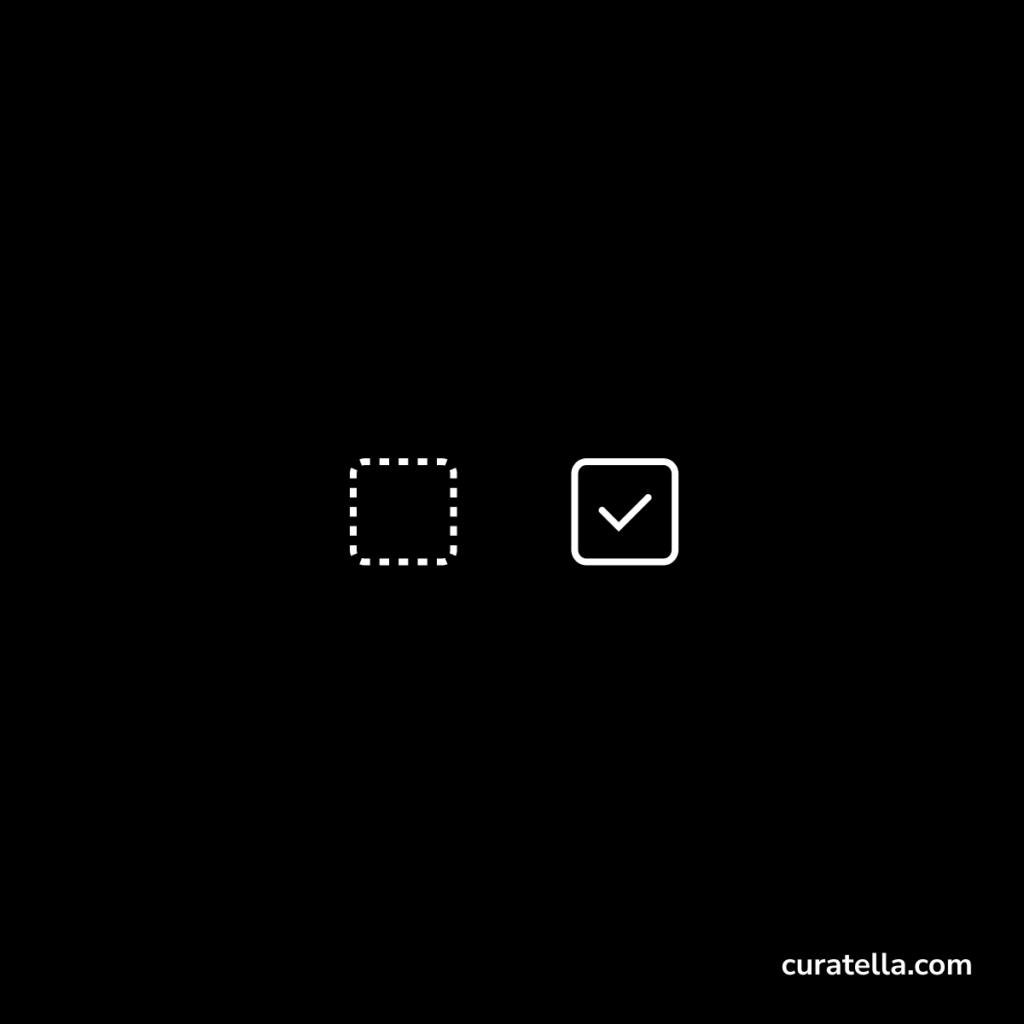
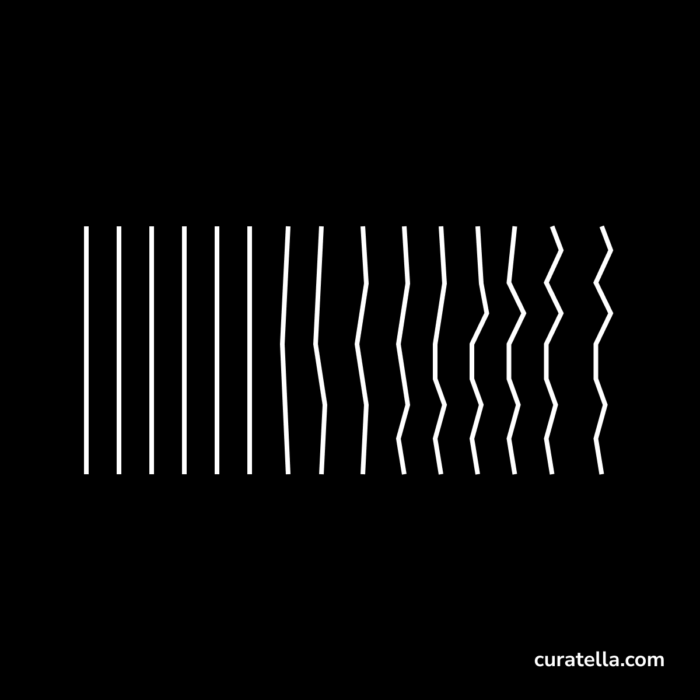
I’m tired. While dreaming of creating articulated content, I am struggling to write little articles. I am so proud to have been writing for almost four months, every single day. But I miss going deeper. Admitting the defeat, from time to time, is part of the game. You say you don’t have anything to write about, and you say it in such an elaborated way that it becomes an article. A great excuse to write about not wanting to write. It’s a public way to foul yourself, You know it, and you know that everybody understands it, but you still look at the word counter, waiting for it to reach a decent number. What is it? 100 words? 200 words? What’s the bare minimum amount of words that makes you feel not ashamed? That is the problem with habits, with commitments. “I made it!”, “I wrote every day!”. “I am good!”. “I will conquer the World!”. But, let’s stop for a second, okay? I understand you’re busy, you’re not a professional writer, it’s already a great victory to devote from 15 to 30 minutes every day to write. And, fine, let’s admit it, you’re brave, you’re also publishing your efforts. But, let’s ask ourselves: what did you write? How much of your content is interesting, unique, engaging, stimulating? How much of your word flow is going to become “evergreen”? Who will remember any of what you wrote? And what will they remember? Yes, sure, you can say that your goal is to “build a habit,” and, look at this, you made it. Fine, but is the content worthwhile?
Quality comes with quantity, but don’t get numb and addicted to fulfilling your daily commitment superficially because “you have to do it.” On top of the continuity, you need to create valuable content. When is the right time to assess what you have written?
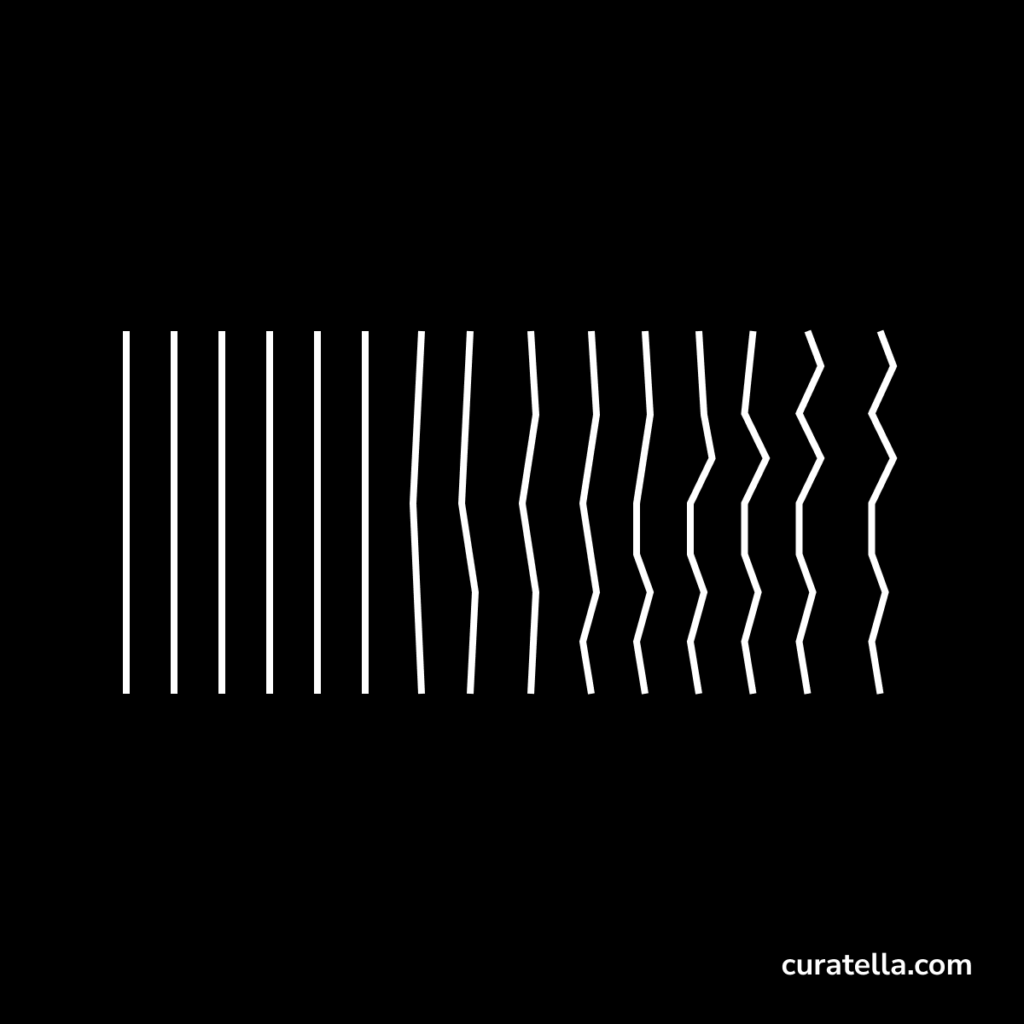
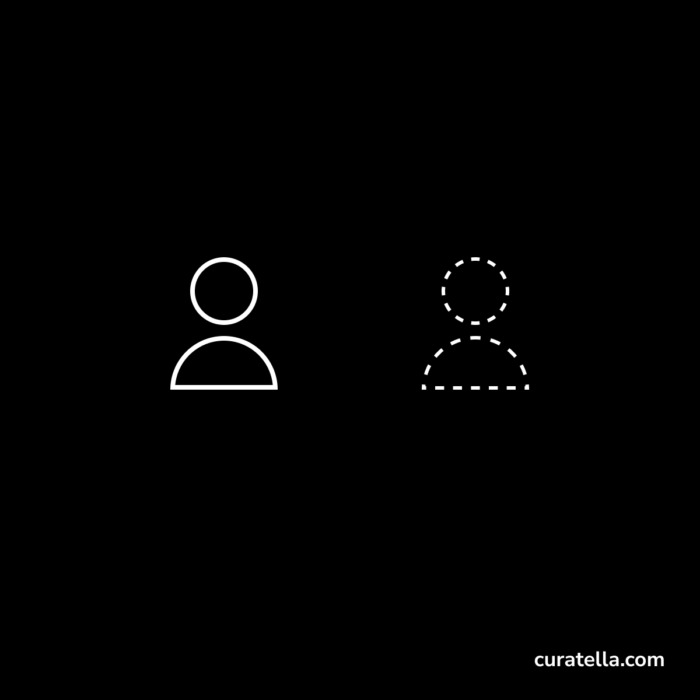
There’s a person I want to introduce to you who is not present and cannot be. You cannot even know them, even if I wanted to bring them to you. There’s an unbridgeable gap between them and us, and it’s not space. It’s time.
The past is gone, and if you don’t keep traces of it, it might disappear. The present is the only time we can reasonably conceive. It’s now. It’s me and you reading these words, precisely at this moment. This is now.
But what about the future? The future does not exist. If it’s very close to us, it’s fast to become the present, and then it flies away towards the past. If it is farther away in time, it becomes an unknowable land in an unknown territory, immersed in the foggy skies of uncertainty. What you are doing in the present is to be there. You are preparing today for your journey towards the future.
How will it be your future?
How will the world be?
And you, what about you?
How will your future self be?
Oracles and crystal balls are to be found in books, not in this world, so you cannot have any certainty about your future self. But, here’s the thing, if you focus on that aethereal persona, philosophy and psychology say that you have a higher chance to connect with them.
Thinking about you but in the future facilitates a better connection with yourself. Something similar to relating to another physical person.
That’s the power of thinking to your future self. You’re extending your life to another dimension. You have the chance not to predict but to influence your future positively. You can become a more conscious person, more open to thinking about your present behaviors’ future consequences.
Writing to your future self is a beautiful way to have a dialogue spanning time and space dimensions. You can time travel and send your current thoughts to the future. And when you reach that place, you will have the unique pleasure of talking to your past self in a weird and illuminating conversation.
You are a living being constrained by, at least, four dimensions: the ones of time and space. Use tangible artifacts to travel not only through space but also through time by sending messages back and forth to your past, present, and future self.
Start today if you’ve never done it.
Start to care more about yourself by loving your future self. Your current choices are determining who you will be in the future. You can change your future by acting today. Rather than focusing on an abstract person in an intangible setting, think about you, but in the future. Think about your future self.